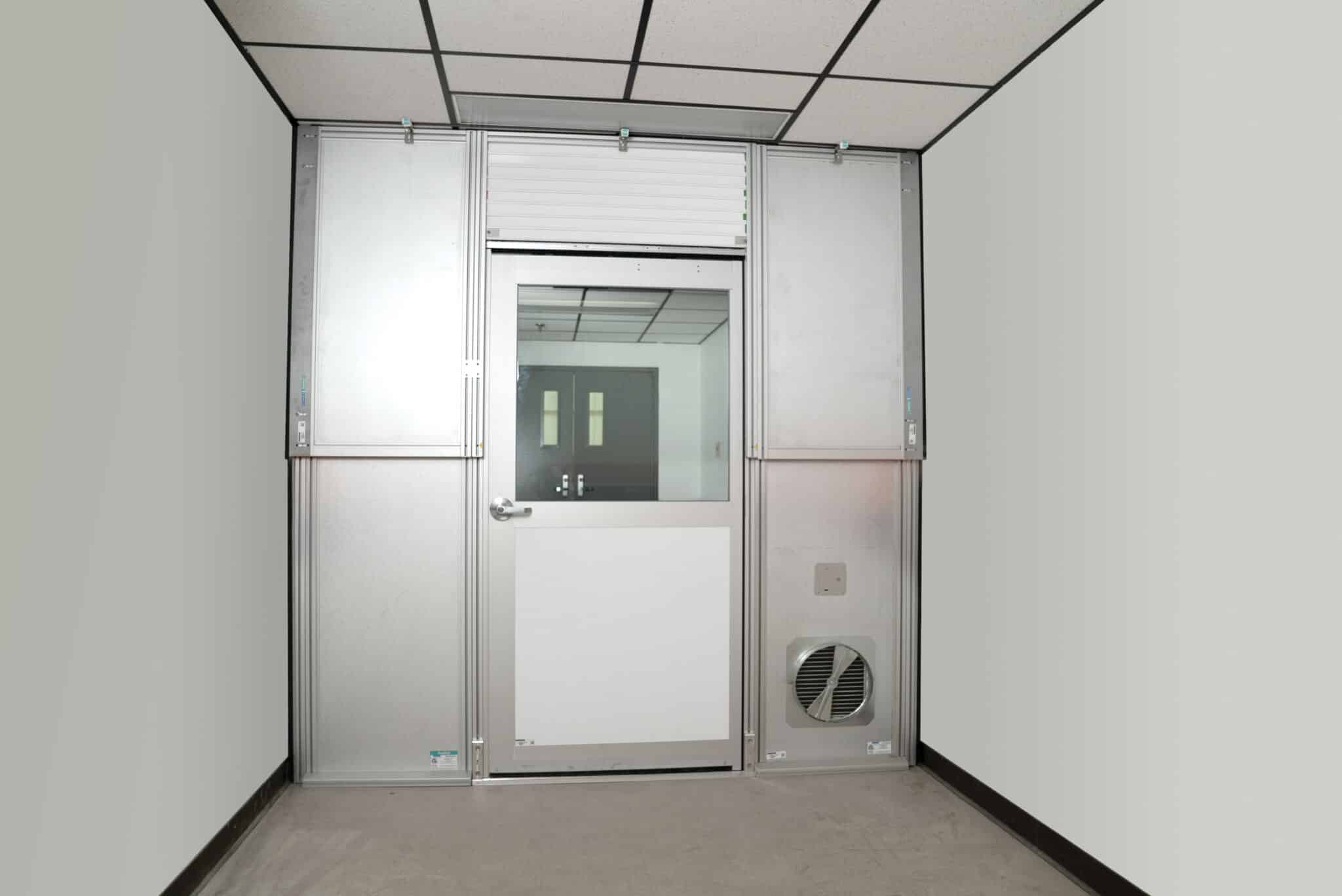
*Updated March 2023
Designing temporary containment for construction and renovation projects takes many factors into consideration, but safety is paramount. Particularly for use in healthcare settings, where concerns about keeping patients, caregivers and staff protected from construction dust and potentially dangerous pathogens are always top of mind.
This focus on dust containment raises a lot of questions about the importance of negative air pressure in relation to infection control and prevention. To help provide clarification – and to shed some light on how we implement negative air functionality in our wall designs – we recently touched based with Norris Gearhart, CR, CCHM and President/CEO of Gearhart and Associates to explain what negative air pressure is, how it’s currently used in healthcare spaces, and the role it plays in mitigating infection risk.
How is Negative Air Pressure Used in Healthcare Spaces
What is negative air pressure?
Negative room pressure, or “negative air,” is used to prevent cross-contamination from a dirty or potentially hazardous environment into a clean or non-contaminated environment.
How is negative air achieved?
Negative air is achieved when the pressure in the space is lower than in the surrounding areas. Air naturally flows from areas with higher pressure to areas with lower pressure as the area with lower pressure strives to create equilibrium with the space around it.
What are some examples of negative air rooms in a healthcare setting?
Some examples of rooms in healthcare that would use negative air pressure are isolation rooms for patients with, or potentially with, airborne contagious diseases such as Tuberculosis, measles, chickenpox, Severe Acute Respiratory Syndrome (SARS-CoV), Middle East Respiratory Syndrome (MERS-CoV), Influenzas (flu), and Coronavirus Disease 2019 (COVID-19). Other areas within healthcare that should be negatively pressurized include:
- Bathrooms
- Emergency Department
- Radiology
- Morgue
- Soiled Utility Storage
- Dirty Side Sterile Processing
- Environmental Services Closets and Storage Areas
Are there requirements that must be met for a negative pressure room in the healthcare space?
For hospital Airborne Infectious Isolation Rooms (AIIRs) with negative-pressure differential, the room needs to be well sealed to prevent excess air leakage into or out of the room. Within reason, the tighter the room is constructed, the more efficiently the air pressure differential can be maintained. Negative pressure rooms should be designed in healthcare for a minimum CFM of airflow for 12 air changes of exhaust per hour and maintain a minimum of 0.03- inch of water column.
Why is negative air critical to meeting ICRA Class IV requirements? Infection Control Risk Assessment Class IV is focused on construction barriers to prevent dust and potentially dangerous pathogens from entering patient care areas. Negative air pressure within the workspace is critical to ensuring that air flows from “clean” undisturbed patient areas to the “dirty” work area, preventing the escape of potential pathogens into the patient occupied space. While this primarily focuses on construction and renovation activities, these precautions must be considered when expanding patient care areas. We saw a good example of this at the height of the pandemic, when hospitals needed to accommodate a surge in COVID-19 patients.
When would positive air pressure be necessary?
Positive pressure isolation rooms keep contagious diseases away from patients with compromised immune systems, such as those with cancer or transplants. Other places in the hospital where you want clean HEPA filtered positive pressure air include operating rooms, delivery rooms, procedure rooms, catheterization labs, sterile storage, serology, biochemistry, pharmacy, medication rooms, and clean linen storage rooms.
Is it possible to convert an existing HVAC system to 100% outside air to eliminate the risk of recirculated air?
Infection Control Today recently publish a fascinating article on large-scale conversions of specific areas in a hospital to negative air wards. These transformations are possible but can be very expensive and not timeframe optimal for older facilities.
Is filtration a satisfactory substitute for negative air?
Filtration reduces the risk of transmitting airborne infectious agents. Depending on their size, particles may be deposited in the upper or lower respiratory tract. Particles can also be deposited in open wounds during dressing changes or invasive procedures. When used correctly, portable HEPA filters prove to be an effective method for achieving an airborne isolation environment.
What are common hurdles to achieving and maintaining negative air pressure?
- Where the make-up air is being pulled from, and where it’s being exhausted to
- Existing walls/soffits
- Egress requirements
- NFPA 241 fire sprinkler requirements
- Supply air leakage
- Expansion joints
- Sensors for variable speed fans
- Fire dampers
At STARC, we specifically designed our RealWall™, LiteBarrier™ and FireblockWall™ systems to contain the spread of construction dust and potentially dangerous pathogens. These ICRA compliant temporary containment systems are easily cleaned with standard antimicrobial disinfectants. They’re also reconfigurable, and they offer unmatched durability and reusability – which translates into long term cost savings.
For more information about temporary containment systems that prioritize infection control, click here.
